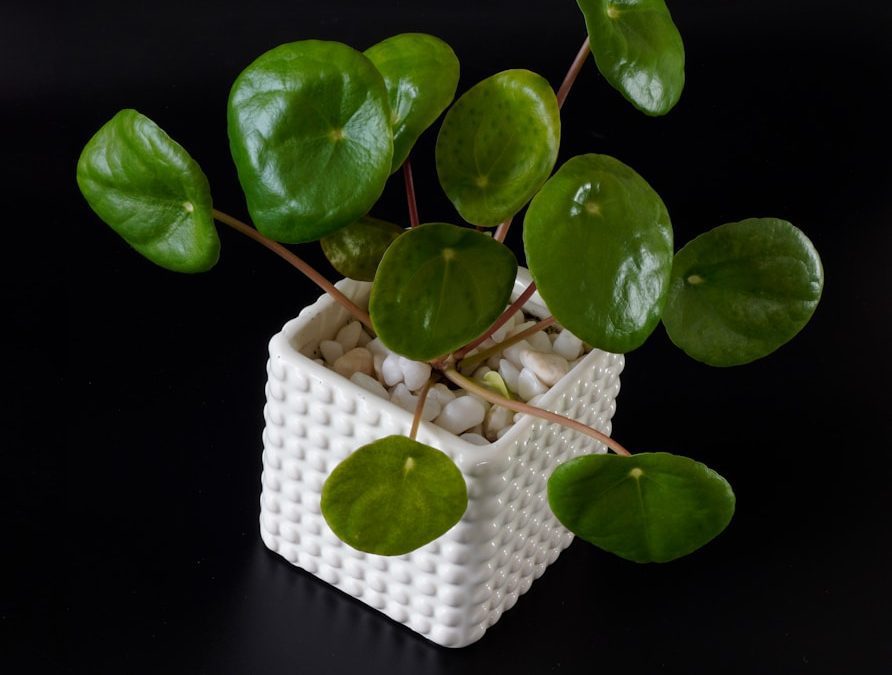The Chinese Money Plant, also known as Pilea peperomioides, has become one of the most popular houseplants around the world. Its round, coin-shaped leaves and easy-care nature make it an attractive addition to any home or office. This guide will provide you with all the necessary information to care for your Chinese Money Plant, ensuring it remains healthy and vibrant.
Contents
Understanding the Chinese Money Plant
Origin and History
The Chinese Money Plant, native to the Yunnan province in Southern China, has a rich history. It was first brought to Europe by a Norwegian missionary in the early 20th century. The plant’s popularity spread throughout Scandinavia, where it became a symbol of good luck and prosperity—hence its name. The plant is also commonly referred to as the Pancake Plant, UFO Plant, or Missionary Plant, reflecting its unique leaf shape and interesting history.
Characteristics
The Chinese Money Plant is characterized by its round, glossy leaves that grow on long, thin stems. The leaves are typically bright green, although they can develop a slightly darker hue under certain lighting conditions. The plant can grow up to 12 inches tall, making it a compact option for small spaces.
One of the most appealing features of the Chinese Money Plant is its ability to produce “pups” or offshoots, which can be propagated easily. This trait allows plant owners to grow new plants from the parent plant, making it a gift that keeps on giving.
Planting and Placement
Choosing the Right Pot
Selecting the right pot is crucial for the health of your Chinese Money Plant. The plant prefers a pot with drainage holes to prevent water from accumulating at the bottom, which can lead to root rot. A ceramic or terracotta pot is ideal as these materials allow the soil to dry out more evenly between waterings.
When choosing the size of the pot, opt for one that is slightly larger than the root ball. The plant will grow better if its roots have some room to spread but aren’t overwhelmed by too much soil, which can retain excess moisture.
Soil Requirements
The Chinese Money Plant thrives in well-draining soil. A standard potting mix with added perlite or sand works well to ensure adequate drainage. Avoid heavy, clay-based soils that retain too much water. If you’re making your own mix, combine equal parts of potting soil, perlite, and sand to create the perfect environment for your plant.
Light Preferences
Light is one of the most important factors in the care of a Chinese Money Plant. The plant prefers bright, indirect light. Direct sunlight can scorch the leaves, leading to brown spots and leaf drop. On the other hand, too little light can cause the plant to become leggy, with leaves spaced far apart on the stem.
A north or east-facing window is typically ideal. If you notice the plant leaning towards the light, rotate it regularly to ensure even growth.
Watering and Humidity
Watering Schedule
Proper watering is key to maintaining a healthy Chinese Money Plant. The plant prefers its soil to dry out slightly between waterings. As a general rule, water the plant when the top inch of soil feels dry to the touch.
Overwatering is one of the most common mistakes made with the Chinese Money Plant. Signs of overwatering include yellowing leaves, a mushy stem, and a general wilting appearance. If you notice these symptoms, allow the soil to dry out completely before watering again, and ensure the pot has adequate drainage.
Humidity Levels
The Chinese Money Plant can tolerate a range of humidity levels, but it thrives in moderate humidity. If your home is particularly dry, especially in winter, consider placing the plant on a tray filled with pebbles and water or using a humidifier to maintain adequate moisture levels in the air.
Seasonal Considerations
During the growing season (spring and summer), your Chinese Money Plant will require more frequent watering and may benefit from occasional misting to boost humidity. In the dormant season (fall and winter), reduce watering and stop misting altogether. The plant’s growth will slow down, and it will require less moisture.
Fertilizing Your Chinese Money Plant
Choosing the Right Fertilizer
The Chinese Money Plant benefits from regular feeding during its growing season. A balanced, water-soluble fertilizer is ideal. Look for a fertilizer with equal parts nitrogen, phosphorus, and potassium (e.g., 10-10-10). Organic fertilizers, such as liquid seaweed or fish emulsion, can also be effective.
Fertilizing Schedule
Fertilize your plant once a month during the spring and summer. Be sure to dilute the fertilizer to half the recommended strength to avoid burning the roots. Over-fertilization can lead to salt buildup in the soil, which can damage the plant.
In fall and winter, reduce or stop fertilizing as the plant’s growth slows down. Fertilizing during this period can result in leggy growth and weaker stems.
Pruning and Maintenance
Regular Pruning
Pruning helps maintain the shape and health of your Chinese Money Plant. Regularly remove any yellow or damaged leaves to encourage new growth and improve air circulation around the plant. Pruning also prevents the plant from becoming too leggy.
To prune, use clean, sharp scissors or pruning shears. Cut the stem just above a leaf node to encourage branching and fuller growth.
Cleaning the Leaves
The large, flat leaves of the Chinese Money Plant tend to accumulate dust over time. Regularly wipe the leaves with a damp cloth to keep them clean and allow the plant to photosynthesize efficiently. Avoid using leaf shine products, as they can clog the pores on the leaves and interfere with their ability to breathe.
Repotting
Repotting your Chinese Money Plant every two to three years is important to refresh the soil and provide the roots with more space. When repotting, choose a pot that is one size larger than the current one and use fresh, well-draining soil. Spring is the best time to repot, as the plant is entering its active growth phase.
Propagating the Chinese Money Plant
Propagation Methods
Propagating the Chinese Money Plant is a rewarding process that allows you to grow new plants from the parent plant. The two most common methods are:
Propagating Pups (Offsets): The Chinese Money Plant often produces small offshoots, known as pups, at the base of the plant. To propagate, carefully separate the pup from the parent plant using a clean knife or scissors. Ensure the pup has some roots attached, then plant it in a small pot with well-draining soil. Water lightly and place it in a bright, indirect light until established.
Stem Cuttings: If your plant doesn’t produce pups, you can propagate using stem cuttings. Cut a healthy stem with at least one leaf and place it in water or soil. If rooting in water, change the water regularly and plant the cutting in soil once roots have developed. If rooting directly in soil, keep the soil moist until roots have formed.
Caring for New Plants
Newly propagated plants require a bit of extra care. Keep them in a warm, bright spot with indirect light and ensure the soil remains lightly moist. Once the plants are established, you can treat them the same as mature Chinese Money Plants.
Common Problems and Solutions
Yellowing Leaves
Yellow leaves are a common issue with the Chinese Money Plant and can indicate several problems. Overwatering is the most frequent cause, leading to root rot. Ensure the plant has good drainage and reduce watering if you suspect this is the problem.
Yellowing can also result from inadequate light. Move the plant to a brighter location if you notice yellowing and the plant is in a low-light environment.
Brown Spots on Leaves
Brown spots can develop from direct sunlight scorching the leaves. Move the plant to a spot with indirect light if this occurs. Brown spots can also be a sign of underwatering, so ensure the plant is getting enough moisture, especially during the growing season.
Leggy Growth
Leggy growth, where the stems are long and spindly with wide gaps between leaves, usually indicates the plant isn’t getting enough light. Move it to a brighter location and rotate the plant regularly to encourage even growth.
Pests
While the Chinese Money Plant is relatively pest-resistant, it can sometimes attract common houseplant pests like spider mites, aphids, and mealybugs. Regularly inspect your plant for signs of pests, such as tiny webs, sticky residue, or cotton-like masses on the leaves.
If you notice pests, isolate the plant and treat it with insecticidal soap or neem oil. Wipe the leaves with a damp cloth to remove any pests and prevent an infestation from spreading.
Seasonal Care Tips
Spring and Summer
Spring and summer are the growing seasons for the Chinese Money Plant. During this time, ensure the plant receives adequate light, water, and nutrients. This is also the best time to propagate, repot, and prune the plant.
Fall and Winter
In fall and winter, the Chinese Money Plant enters a dormant phase. Reduce watering and stop fertilizing during this period. Ensure the plant is kept in a cool, bright location but avoid exposing it to cold drafts or temperatures below 50°F (10°C).
Final Thoughts
Caring for a Chinese Money Plant is relatively simple, making it an excellent choice for both novice and experienced plant owners. With proper care, this plant can thrive and become a beautiful addition to any indoor space. Whether you’re drawn to its aesthetic appeal or its reputation for bringing good luck, the Chinese Money Plant is a plant that offers both charm and easy maintenance.


